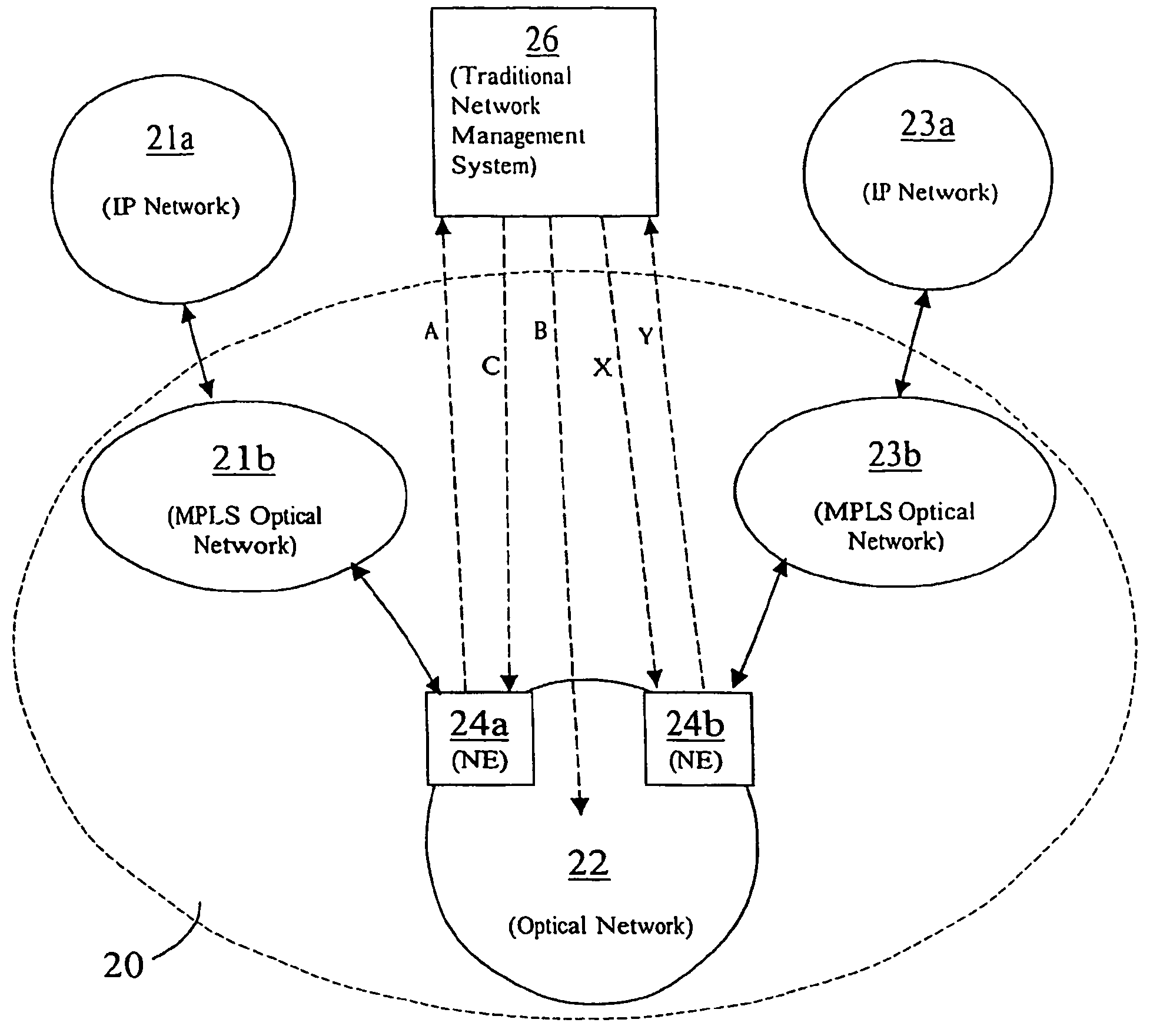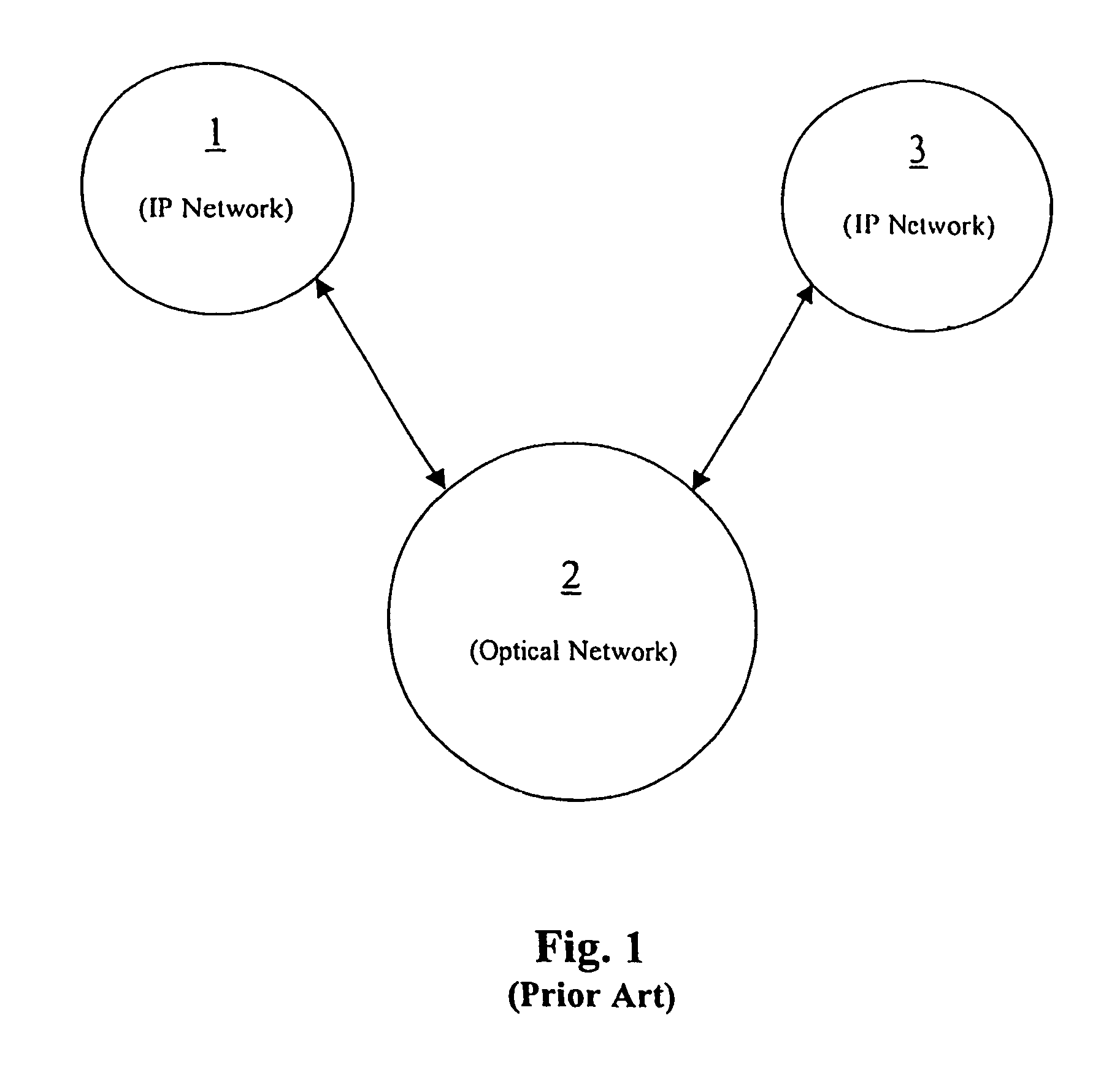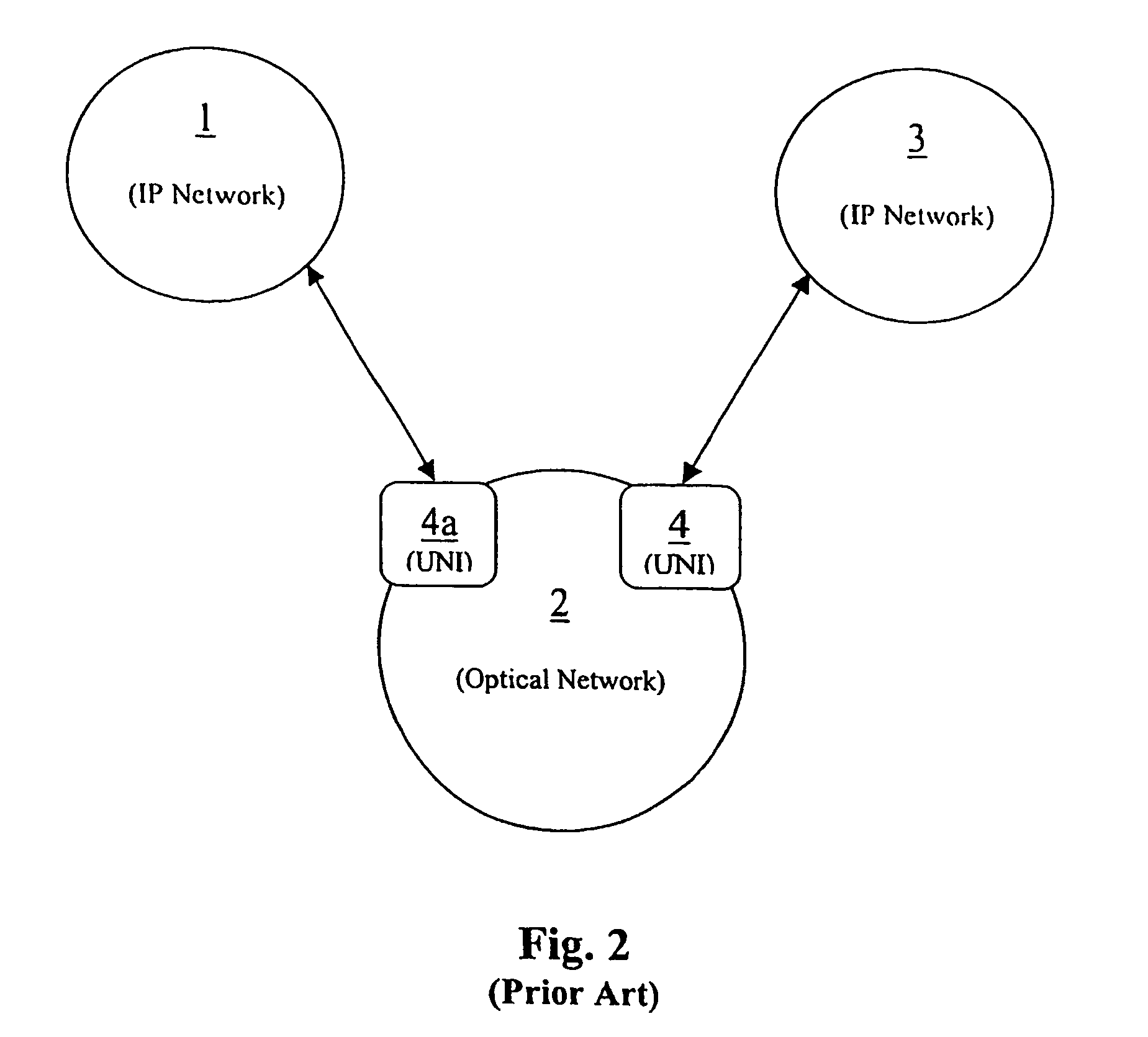Establishing connection across a connection-oriented first telecommunications network in response to a connection request from a second telecommunications network
a telecommunications network and connection technology, applied in the field of communication across a telecommunications network, can solve the problems of difficult integration of gmpls into optical networks, information may be considered to be commercially sensitive, and the public availability of topological information may be undesirable, so as to achieve the effect of reducing one or more of the problems
- Summary
- Abstract
- Description
- Claims
- Application Information
AI Technical Summary
Benefits of technology
Problems solved by technology
Method used
Image
Examples
first embodiment
[0030]A telecommunications network according to the invention is shown in FIG. 3. With reference to FIG. 3 the network includes a first MPLS enabled IP network 11 connectable to a second MPLS enabled IP network 13 via a legacy optical network 12. The legacy optical network 12 includes a plurality of internal network elements 15 (only one of which is shown in FIG. 3 for the sake of clarity) and a plurality of edge network elements 14a, 14b (only two of which are shown). The legacy optical network 12 is also connected to a traditional network management system 16.
[0031]At the interface between the first IP network 11 and the optical network 12, signals may be received and sent by an edge network element 14a of the optical network 12. Similarly, at the interface between the second IP network 13 and the optical network 12, signals may be received and sent by an edge network element 14b of the optical network 12. Network access and connection requests may be made through the edge network...
second embodiment
[0047]Also, two IP networks could be connected via an optical network, such that a first IP network is connected to a single legacy network, which is connected to a single MPLS optical network, which is connected to a second IP network. In such a case, the receipt from the first network of a UNI request requesting connection to the second IP network would be handled in a similar manner to that described with reference to the The UNI request would be passed from an ingress legacy network element to the network management system of the legacy network, which would set a connection, send a UNI request via an egress legacy network element to the MPLS optical network, receive an appropriate response via the egress legacy network element from the MPLS optical network, and then cause the ingress legacy network element to send an appropriate response to the requesting IP network, data thereafter being transmitted from the first IP network across the optical network and to the second IP netw...
PUM
 Login to View More
Login to View More Abstract
Description
Claims
Application Information
 Login to View More
Login to View More - R&D
- Intellectual Property
- Life Sciences
- Materials
- Tech Scout
- Unparalleled Data Quality
- Higher Quality Content
- 60% Fewer Hallucinations
Browse by: Latest US Patents, China's latest patents, Technical Efficacy Thesaurus, Application Domain, Technology Topic, Popular Technical Reports.
© 2025 PatSnap. All rights reserved.Legal|Privacy policy|Modern Slavery Act Transparency Statement|Sitemap|About US| Contact US: help@patsnap.com



